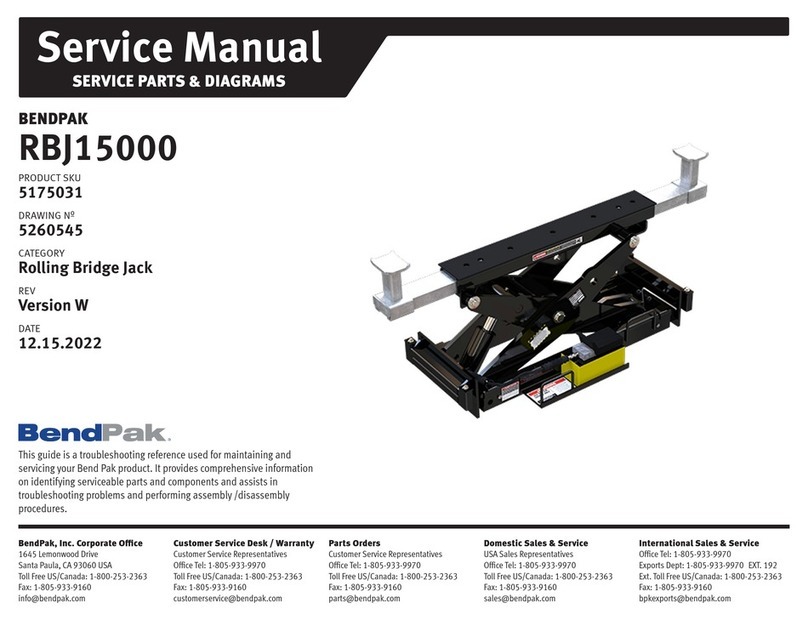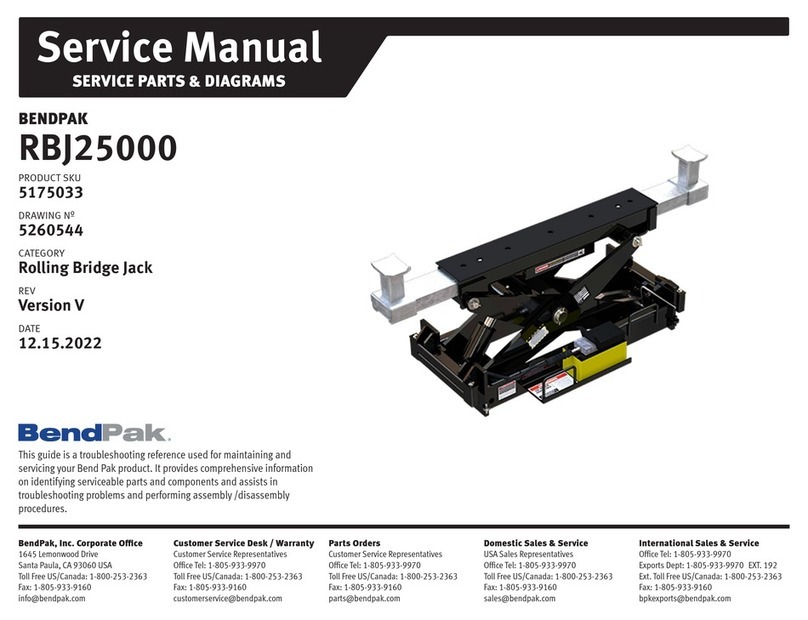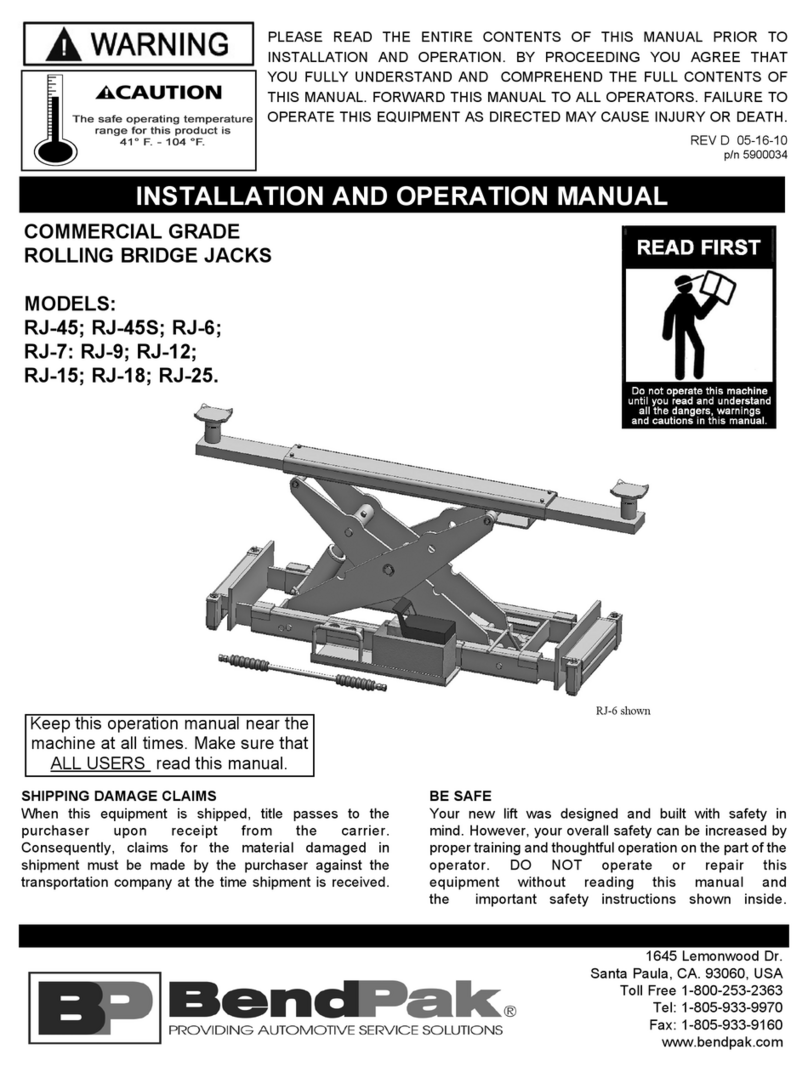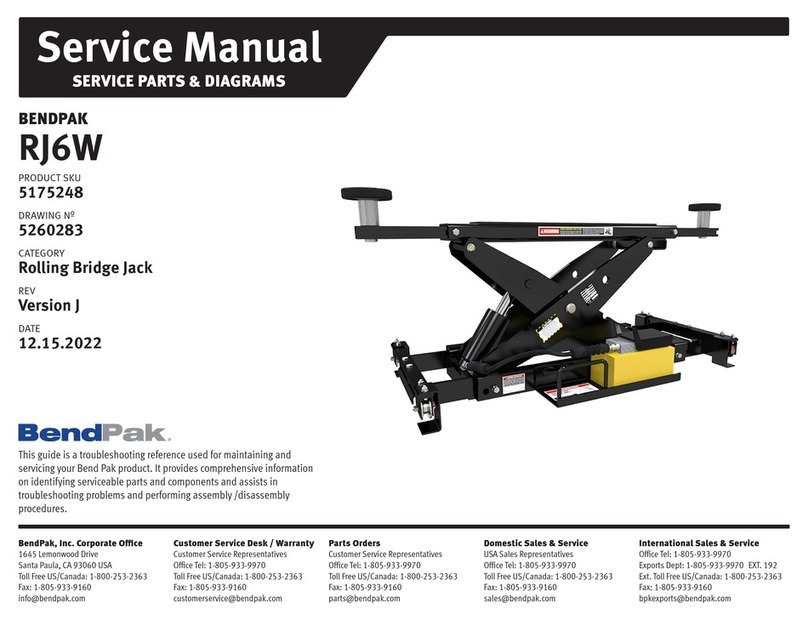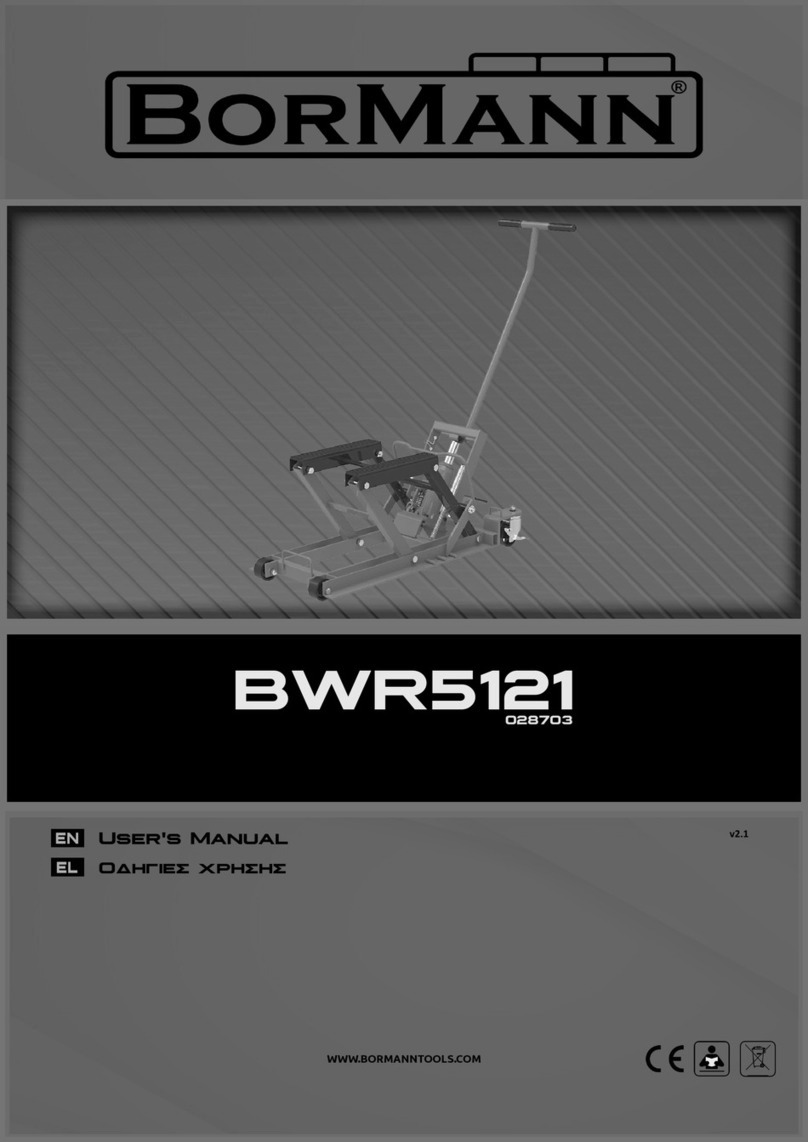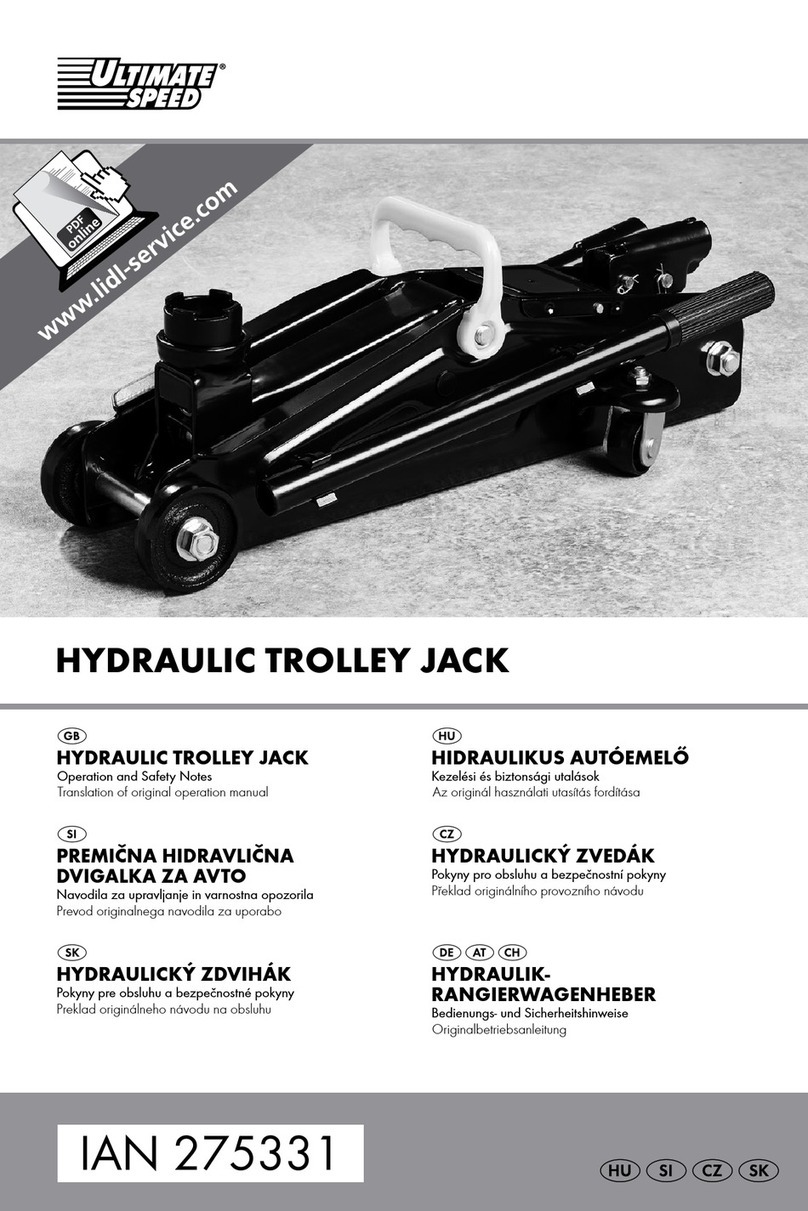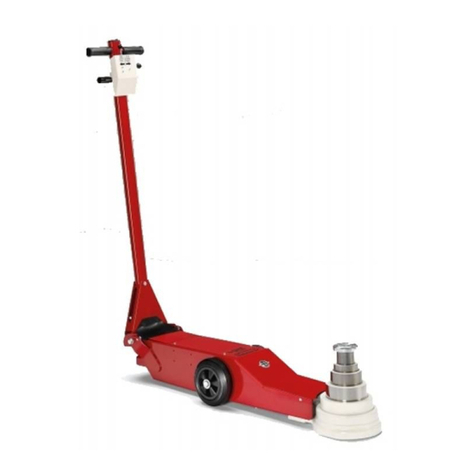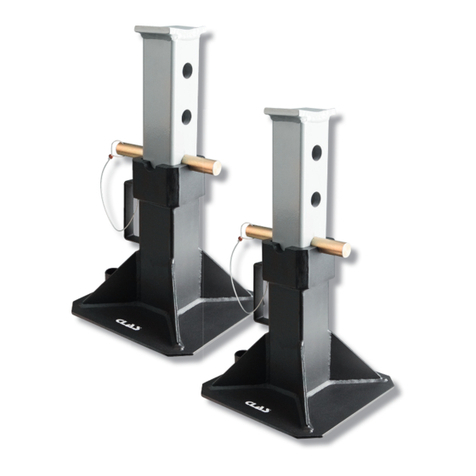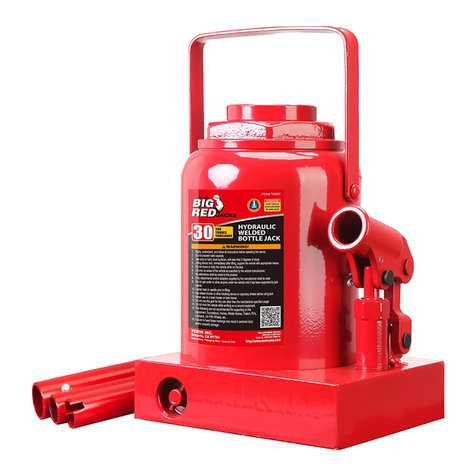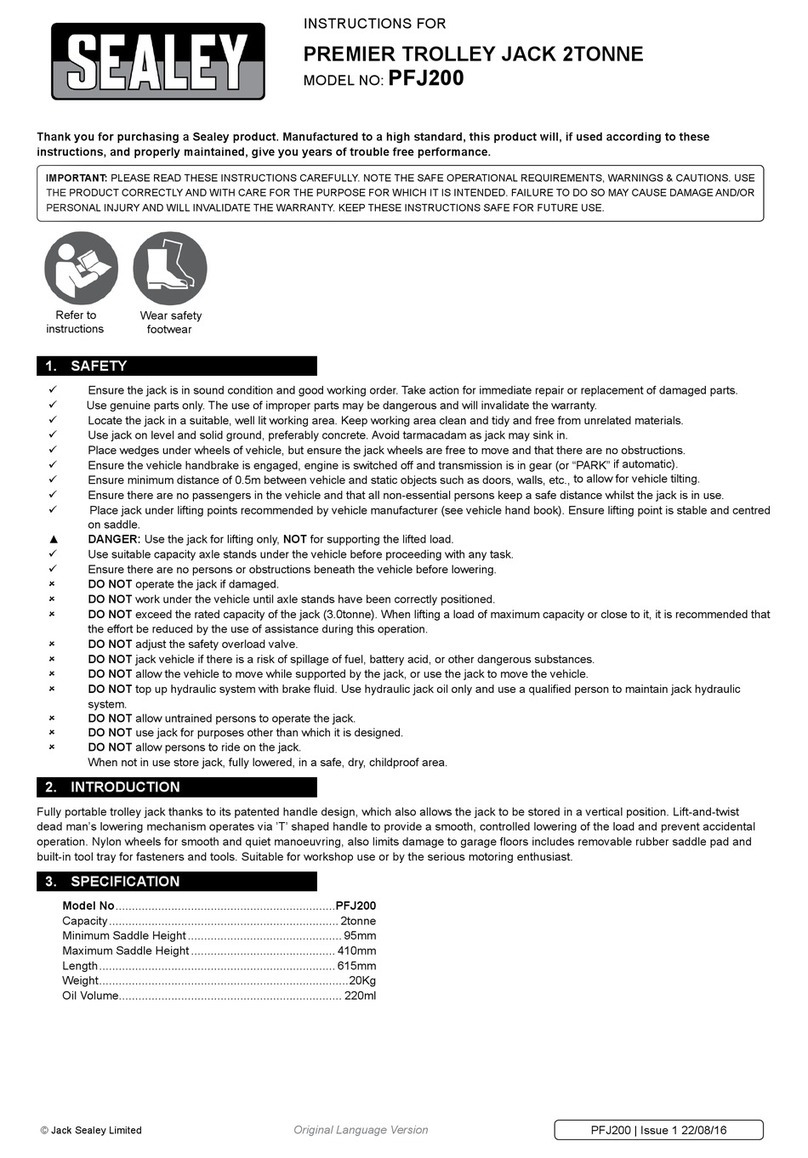Bend-Pak RJW Series User manual

1645 Lemonwood Dr.
Santa Paula, CA, 93060 USA
Toll Free: 1 (800) 253-2363
Tel: 1 (805) 933-9970
bendpak.com
Rolling Bridge Jacks
Installation and Operation Manual
Manual P/N 5900093 — Manual Revision B — Released October 2020
Models:
•RJ45LP
•RJ45W
•RJ6W
•RJ7W
•RJ9W
Designed and engineered by BendPak Inc. in Southern California, USA. Made in China.
⚠
DANGER
Read the
entire
contents of this manual
before
using this
product. Failure to follow the instructions and safety precautions in
this manual can result in serious injury or death. Make sure all other
operators also read this manual. Keep the manual near the product
for future reference.
By proceeding with setup and operation,
you agree that you fully understand the contents of this
manual and assume full responsibility for product use
.

Manual. RJW Series of Rolling Bridge Jacks, Installation and Operation Manual, Manual Part Number 5900093,
Manual Revision B, Released October 2020.
Copyright. Copyright © 2020 by BendPak Inc. All rights reserved. You may make copies of this document if you
agree that: you will give full attribution to BendPak Inc., you will not make changes to the content, you do not gain
any rights to this content, and you will not use the copies for commercial purposes.
Trademarks. BendPak and the BendPak logo are registered trademarks of BendPak Inc. All other company,
product, and service names are used for identification only. All trademarks and registered trademarks mentioned
in this manual are the property of their respective owners.
Limitations. Every effort has been made to ensure complete and accurate instructions are included in this
manual. However, product updates, revisions, and/or changes may have occurred since this manual was
published. BendPak reserves the right to change any information in this manual without incurring any obligation for
equipment previously or subsequently sold. BendPak is not responsible for typographical errors in this manual.
The latest version of this manual is always online at the BendPak website.
Warranty. The BendPak warranty is more than a commitment to you: it is also a commitment to the value of
your new product. Contact your nearest BendPak dealer or visit www.bendpak.com/support/warranty for
full warranty details. Go to bendpak.com/support/register-your-product/ and fill out the online form to
register your product (be sure to click Submit).
Safety.Your new product was designed and manufactured with safety in mind. Your safety also depends on
proper training and thoughtful operation. Do not set up, operate, maintain, or repair the unit without reading and
understanding the safety information in this manual and the labels on the unit. Contact BendPak if you are unclear
about any safety aspect of this product;
do not use this product unless you can do so safely!
Owner Responsibility. In order to maintain your product properly and to ensure operator safety, it is the
responsibility of the product owner to read and follow these instructions:
• Follow all setup, operation, and maintenance instructions.
• Make sure product setup conforms to all applicable local, state, and federal codes, rules, and regulations,
such as state and federal OSHA regulations and electrical codes.
• Read and follow all safety instructions. Keep them readily available for operators.
• Make sure all operators are properly trained, know how to safely operate the unit, and are properly supervised.
• Do not operate the product until you are certain all parts are in place and operating correctly.
• Carefully inspect the product on a regular basis and perform all maintenance as required.
• Service and maintain the unit only with approved replacement parts.
• Keep all instructions permanently with the product
and make sure all labels are clean and visible.
•
Only use this product if it can be used
safely!
Unit Information. Enter the Model Number, Serial
Number, and the Manufactured On date from the label
on your unit. This information is required for part or
warranty issues.
Model:
Serial:
Manufactured On:

RJW Series of Rolling Jacks 3P/N 5900093 — Rev. B — October 2020
Table of Contents
Introduction 3 Operation 22
Shipping Information 4 Maintenance 26
Safety Considerations 4 Troubleshooting 27
Components 6 Accessories 28
FAQ 8 Labels 30
Specifications 9 Parts Sheets 32
Setup 10 ALI Store 43
Introduction
This manual covers the RJW Series of Rolling Bridge Jacks, which are used on four-post Lifts to raise
two or four wheels off the Lift’s Runway, making brake jobs and suspension work, for example, easier
to do.
This manual covers the following RJW models:
•RJ45LP: Raises low-profile Vehicles up to 4,500 lbs / 2/041 kg
•RJ45W: Raises up to 4,500 lbs / 2,041 kg
•RJ6W: Raises up to 6,000 lbs / 2,721 kg
•RJ7W: Raises up to 7,000 lbs / 3,175 kg
•RJ9W: Raises up to 9,000 lbs / 4,082 kg
All models are ALI Certified accessories for many of the four-post Lifts with which they are used. ALI is
the Automotive Lift Institute (www.autolift.org), an independent organization whose mission is to
promote the safe design, construction, installation, inspection, and use of automotive Lifts.
This manual is mandatory reading for all users of these Rolling Bridge Jacks, including anyone who
installs, operates, maintains, or repairs them.
⚠DANGER Be very careful when installing, operating, maintaining, or repairing your unit; failure
to do so could result in property damage, product damage, injury, or (in very rare
cases) death. Make sure only authorized personnel operate the unit. All repairs
must be performed by an authorized technician. Do not make modifications to the
unit; this voids the warranty and increases the chances of injury or property
damage. Make sure to read and follow the instructions on the labels on the unit.
Keep this manual on or near the equipment so that anyone who uses or services it can read it.
If you are having issues, refer to the Troubleshooting section of this manual for assistance.
Technical support and service is available from your dealer, on the Web at bendpak.com/support,
by email at support@bendpak.com, or by phone at (800) 253-2363, extension 196.

RJW Series of Rolling Jacks 4P/N 5900093 — Rev. B — October 2020
You may also contact BendPak for parts replacement information (please have the model and serial
number of your unit available) at (800) 253-2363, extension 191.
Shipping Information
Your unit was carefully checked before shipping. Nevertheless, you should thoroughly inspect the
shipment before you sign to acknowledge that you received it.
When you sign the bill of lading, it tells the carrier that the items on the invoice were received in good
condition. To protect yourself, do not sign the bill of lading until after you have inspected the shipment.
If any of the items listed on the bill of lading are missing or are damaged, do not accept the shipment
until the carrier makes a notation on the bill of lading that lists the missing and/or damaged goods.
If you discover missing or damaged goods after you receive the shipment and have signed the bill of
lading, notify the carrier at once and request the carrier to make an inspection. If the carrier will not
make an inspection, prepare a signed statement to the effect that you have notified the carrier (on a
specific date) and that the carrier has failed to comply with your request.
It is difficult to collect for loss or damage after you have given the carrier a signed bill of lading. If this
happens to you, file a claim with the carrier promptly. Support your claim with copies of the bill of
lading, freight bill, invoice, and photographs, if available. Our willingness to assist in helping you
process your claim does not make us responsible for collection of claims or replacement of lost or
damaged materials.
Safety Considerations
Read this manual carefully before using your new product.
Do not set up or operate
the product until you are familiar with all operating instructions and warnings. Do not allow anyone else
to operate the product until they are also familiar with all operating instructions and warnings.
Rolling Bridge Jack Safety Information
Please note the following:
•The product is a Rolling Bridge Jack.
Use it only for its intended purpose
.
•The product must only be operated by authorized, trained personnel.
•When the product is in use, keep all body parts away from it.
•Do not make any modifications to the product.
⚠WARNING When the Rolling Bridge Jack is on a raised Lift, do not go under it! If you notice
a Roller out of position, get everyone out from under the Lift, carefully lower the Lift,
reposition the Rollers back onto the Utility Rail, and then make sure the Safety
Brackets and Adjustment Bolts are correctly installed and adjusted.
•Make sure all operators read and understand this Installation and Operation Manual. Keep the
manual near the device at all times.
•Make a visual inspection of the product before using it every time. Check for missing or damaged
parts. Do not use the product if you find any of these issues. Instead, take the Jack out of service,
then contact an authorized repair facility, your distributor, or BendPak at (800) 253-2363.

RJW Series of Rolling Jacks 5P/N 5900093 — Rev. B — October 2020
•Make a thoroughinspection of the product at least once a year. Replace any damaged or severely
worn cables, hydraulic hoses, decals, or warning labels. Do not use the product until worn or
damaged items have been replaced.
•Do not touch hot parts; you could be burned.
•Take care locating cables and hoses; you do not want them driven over or stepped on.
•Always wear steel-toed footwear and safety glasses when using the Jack.
•Clear the area immediately if a Vehicle is in danger of falling off the Rolling Jack.
•
Make sure the Rolling Jack is engaged on its Safety Locks before starting work.
•Operating temperature range for a Rolling Jack is 41°F to 104°F (5°C to 40°C).
•Make sure the weight of a Vehicle being raised by a Rolling Jack does
not
exceed its maximum
lifting capacity.
Symbols
Following are the symbols used in this manual:
⚠DANGER Calls attention to an immediate hazard that
will
result in death or severe injury.
⚠WARNING Calls attention to a hazard or unsafe practice that
could
result in death or severe
personal injury.
⚠CAUTION Calls attention to a hazard or unsafe practice that could result in minor personal
injury, product, or property damage.
NOTICE Calls attention to a situation that, if not avoided, could result in product or property
damage.
Tip Calls attention to information that can help you use your product better.
Liability Information
BendPak assumes
no
liability for damages resulting from:
• Use of the equipment for purposes other than those described in this manual.
• Modifications to the equipment without prior, written permission from BendPak.
•Injury or death caused by modifying, disabling, overriding, or removing safety features.
• Damage to the equipment from external influences.
• Incorrect operation of the equipment.

RJW Series of Rolling Jacks 6P/N 5900093 — Rev. B — October 2020
Components
Rolling Jack components include:
•Scissor Structure. Rolling Jacks are scissor lifts that are powered by air pressure from the Air-
Operated Hydraulic Pump.
•Air-Operated Hydraulic Pump. Provides power to the Rolling Jack. The Air-Operated
Hydraulic Pump must be attached to an air supply: 20 cubic feet per minute (.57 cubic meters per
minute) and 100 psi (7 bar).
•Foot Pedal. Raises and lowers the Rolling Jack. Despite its name, you can use the Foot Pedal
with your hands or your feet. Located on the top of the Hydraulic Pump.
•Hydraulic Hose. Connects the Air-Operated Hydraulic Pump to the Hydraulic Cylinder; comes
connected.
•Hydraulic Cylinder. Moves the Scissor Structure up and down.
•Safety Locks. Hold the Rolling Jack in place once engaged. Always leave your Rolling Jack
either fully lowered or engaged on its Safety Locks;
never leave a Rolling Jack in an
unlocked position with a Vehicle on it
.
⚠WARNING Before starting work on a Vehicle, make sure the Rolling Jack is engaged on its
Safety Locks and the Lift Pads are in contact with the axle on the underside of the
Vehicle.
•Safety Handle. Moves the Rolling Jack off its Safety Locks so it can be lowered.
•Adjustable Arms. Slide in and out so you can precisely position the Lift Pads on the axles of the
Vehicles you are lifting.
•Lift Pads. Position them under the axle on the underside of the Vehicle. Lift Pads fit into the holes
on the end of the Adjustable Arms.
Tip If you have an RJ45W and want more control over where the Rolling Jack contacts
the axles on the underside of Vehicles, the RJ45W Adapter Kit includes two sliding
rubber contact pads and two sliding receivers.
•Lift Pad Extenders. Allow you to raise the height of the Lift Pads to better hit the axles on
Vehicles. Two Medium and two Tall Extenders are included with the Rolling Jack.
•Extender Holder. Hold the Lift Pad Extenders when you are not using them.
•Moving Handle. Used to move the Rolling Jack. Not the same thing as the Safety Handle.
•Extendable Bases. Move in and out to accommodate the distance between the Lift’s Runways.
•Rollers. Located on the ends of the Extendable Bases, the Lip Rollers or Channels Rollers sit on
the Utility Rail Lip or in the Utility Rail Channel and let you move the Rolling Jack. Models RJ45W,
RJ6W, and RJ7W have Lip Rollers. Model RJ9W has Channel Rollers.
•Safety Brackets. A safety feature, they hold the Rolling Jack in place on the Utility Rail. Installed
after the Jack is put into place.
Installation is mandatory
.
•Adjustment Bolts. Another safety feature, they hold the Extendable Bases in place. They come
installed but not tightened.
Tightening is mandatory
.

RJW Series of Rolling Jacks 7P/N 5900093 — Rev. B — October 2020
Model RJ7W shown. Some models vary slightly. Not necessarily to scale. Some components
exaggerated for clarity.

RJW Series of Rolling Jacks 8P/N 5900093 — Rev. B — October 2020
Frequently Asked Questions
Question: What kinds of Vehicles can I raise on my Rolling Jack?
Answer: A wide range of Vehicles. There are multiple Rolling Jack models, each supporting different
weight capacities, so a wide range of Vehicles can be raised.
Q: If a Vehicle is already raised on a four-post Lift, why do I need a Rolling Jack?
A: A Rolling Jack gives you the option of raising two or four wheels of the Vehicle off the Runway,
which makes certain automotive services (brake jobs, suspension work, tire changes, and so on)
easier. Each Rolling Jack can raise two wheels of the Vehicle via its axle, so to get
four wheels
off
the Runway, you need
two
Rolling Jacks.
Q: How does a Rolling Jack work?
A: Each Rolling Jack gets positioned between the Runways of a four-post Lift, such as an HD-9. They
are used to raise the front or the rear of the Vehicle up off the Runway, via their axles. Having the
Wheels off the Runways makes it easier to perform certain automotive services.
Q: What Rolling Jack goes with what BendPak Lift?
A: Rolling Jacks are associated with specific BendPak Lifts, based on weight capacities. So if you
have a BendPak HD-14 Lift, for example, you would need two RJ7W Rolling Jacks. Each Jack can
only raise up to half of the weight for which the Lift is rated.
Q: Can I use a Rolling Jack on an Alignment Lift?
A: Yes. They work the same on an Alignment Lift.
Q: Are Rolling Jacks heavy?
A: Yes. You need a Shop Crane or Forklift to put them into position and you must not stand or walk
under them. Your Rolling Jack was designed to stay in place, but you should always use extreme care
when walking around under Lifts, raised Vehicles, and Rolling Jacks.
BendPak strongly
recommends walking around rather than under any raised Vehicle
.
Q: Why are the bases of a Rolling Jack extendable?
A: To accommodate different widths between Runways on some four-post Lifts.
Q: How is a Rolling Jack powered?
A: Via air pressure (that you supply) that connects to the Air-Operated Hydraulic Pump. The optional
Air Line Kit (5174009) makes this easy; visit the website page for more information.
Q: How many Safety Lock positions does my Rolling Jack have?
A: Three. This gives you three heights to which you can raise and hold the Vehicle, whichever is best
for the work you want to do.
Q: How long can I leave a Vehicle raised on my Rolling Jack?
A: For quite some time, as long as long as you leave the Rolling Jack engaged on its Safety Locks.
Once the Safety Locks are engaged, gravity holds the Vehicle up, so a loss of air pressure has no
impact; your Vehicle is going to stay where you left it.
Always leave your Rolling Jack either
fully lowered or engaged on its Safety Locks.

RJW Series of Rolling Jacks 9P/N 5900093 — Rev. B — October 2020
Specifications
Model RJ45LP RJ45W
Lifting capacity 4,500 lbs / 2,041kg 4,500 lbs / 2,041 kg
Minimum Drive-Over Height (Pad only) 4.25" / 108 mm 4.5" / 114 mm
Maximum Lifting Height (Pad only) 15.25" / 387 mm 15.5" / 394 mm
Minimum arm reach 42" / 1,067 mm 42" / 1,069 mm
Maximum arm reach 61" / 1,549 mm 57" / 1,449 mm
Maximum operating hydraulic pressure 2, 490 psi 2,490 psi
Shipping weight 306 lbs / 139 kg 380 lbs / 172 kg
Model RJ6W RJ7W RJ9W
Lifting capacity 6,000 lbs / 2,721 kg 7,000 lbs / 3,175 kg 9,000 lbs / 4,082 kg
Min. Drive-Over Height
(Pad only)
1.25" / 32 mm 4" / 102 mm 5.25" / 133 mm
Max. Lifting Height
(Pad only)
12" / 305 mm 14.75" / 375 mm 16.25" / 413 mm
Minimum arm reach 42" / 1,062 mm 42" / 1,062 mm 42" / 1,062 mm
Maximum arm reach 56" / 1,426 mm 56" / 1,426 mm 56" / 1,426 mm
Maximum operating
hydraulic pressure
3,370 psi 4,550 psi 5,020 psi
Shipping weight 426 lbs / 193 kg 431 lbs / 195 kg 445 lbs / 206 kg
Specifications are subject to change without notice.
About Vehicle Wheelbases
A four-post Lift supports less weight than its rated capacity when the wheelbase of the Vehicle on the
Lift is shorter. This is because the wheels of these shorter wheelbase Vehicles are closer to the middle
of the Runways, where there is less strength. Consequently, the rated capacity of that Lift is less with
these shorter wheelbase Vehicles on the Runways.
For example, if you want to raise a Vehicle with a wheelbase of only 100" on an HDS-14LSX Lift, the
rated capacity of the Lift is reduced by 50% to 7,000 lbs (3,175 kg) for that Vehicle.
Rated capacity information is included in the Specifications section in the manual of all four-post Lifts.
Refer to the manual for a specific Lift for additional information.
This reduced capacity based on Vehicle wheelbase does not impact the rated capacity of the Rolling
Jacks used on those Lifts. Nevertheless, make sure to always check the rated capacity of the Lift your
Rolling Jacks are being used on to make sure it does not exceed the rated capacity of the Lift for the
Vehicle that is on the Lift.

RJW Series of Rolling Jacks 10 P/N 5900093 — Rev. B — October 2020
Setup
This section describes how to set up your Rolling Jack.
Safety Rules
When installing a Rolling Jack, your safety depends on proper training and thoughtful operation.
⚠WARNING Do not install this equipment unless you have automotive lift installation training.
Always use proper lifting tools, such as a Forklift or Shop Crane, to lift heavy
components. Do not install this equipment without reading and understanding this
manual and the safety labels on the unit.
Only fully trained personnel should be involved in installing this equipment. Pay attention at all times.
Use appropriate tools and lifting equipment. Stay clear of moving parts.
⚠WARNING You must wear appropriate protective equipment during setup: leather gloves,
steel-toed work boots, eye protection, back belts, and hearing protection.
Tools
You may need some or all of the following tools:
•Hex key wrench set
•Medium crescent wrench
•Forklift, Shop Crane, or other heavy lifting device
•Medium flat screwdriver
•Tape measure, 25 feet or longer
•Air fitting, to connect the Air-Operated Hydraulic Pump to air pressure
Preparing the Rolling Jack
After your Rolling Jack arrives, there are some things you have to do to get it ready for normal
operation:
•Remove it from its container. The Rolling Jack comes in a wooden container that protects it
during transport.
To remove the Jack from its wooden container:
1. Where the Top meets the Sides, push the metal tabs all the way down, on all four sides.
2. Take the Top off.
You may have to apply some force to get all of the metal tabs free; they sometimes stick.
3. Remove the Accessory Box.
4. Remove the two Roller Assemblies.

RJW Series of Rolling Jacks 11 P/N 5900093 — Rev. B — October 2020
•Make sure everything is there. The Shipping Container should contain:
–The Accessory Box, which includes the Manual, two black round Lift Pads, two Medium
Extenders, and two Tall Extenders.
–Four Safety Brackets.
–Two Roller Assemblies.
–The Rolling Jack, including the Air-Operated Hydraulic Pump.
If any of these items are missing, contact your dealer, go to bendpak.com/support, email
support@bendpak.com, or call (800) 253-2363.
•Install the Roller Assemblies. You must install a Roller Assembly on each end of the Rolling
Jack.
To install a Roller Assembly:
1. Raise the Rolling Jack off the ground by at least three inches.
2. Remove the two Bolts, Washers, and Nuts in the middle of each Roller Assembly.
3. Orient a Roller Assembly over the Extendable Base on one end of the Rolling Jack.
The Nyloc Nut holding the Roller in place must face the outside of the Rolling Jack.
Not necessarily to scale. Not all components shown. Top view.
4. Replace the two Bolts in the middle of each Roller Assembly and
securely
tighten them.

RJW Series of Rolling Jacks 12 P/N 5900093 — Rev. B — October 2020
Preparing the Lift
Rolling Jacks go into the open space between the two Runways of a four-post Lift.
Keep the following in mind:
•The
Lift
must be installed properly and operating normally. Only use a Rolling Jack
with a Lift that has been installed according to the manufacturer’s instructions and is operating
normally per those instructions.
⚠WARNING Do not set up or use a Rolling Jack if the Lift is not the model the Rolling Jack was
designed for or the Lift was improperly installed. Instead, contact the manufacturer
of the Lift or BendPak Customer Service at (800) 253-2363 for instructions.
•The Lift must be lowered. Before putting your Rolling Jack into position between the
Runways, fully lower the Lift or set it on its lowest Safety Lock position.
Tip If you are going to be using a Crane to position your Rolling Jack, you may need to lock
the Lift on the lowest Safety Lock position to make room for the legs of the Crane.
•You can only use the Rolling Jack in certain locations on the Lift. This is because the
strength of the Lift is less in the middle, so raising a Vehicle in the middle could permanently
damage the Lift’s Runways.
⚠CAUTION Using Rolling Jacks in the middle of the Lift could permanently damage the Lift’s
Runways.
Damage caused by this unsupported use of Rolling Jacks is
not covered by the warranty.

RJW Series of Rolling Jacks 13 P/N 5900093 — Rev. B — October 2020
Drawing not necessarily to scale. Not all components shown. Top view.
So what does this information mean:
•If you are using
one
Rolling Jack on your Lift, do not use it in the unusable area.
•If you are using
two
Rolling Jacks on your Lift, center the Vehicle between the Front and the Back
of the Runways, over the area that is not usable for Rolling Jacks. This gives you the most room on
the two ends (the usable areas) for your Rolling Jacks.
•If you are using
two
Rolling Jacks, they must never be closer to each other than 30% of the length
of the Runway of the Lift they are on, nor can either one be used in the unusable area.
Check the Specifications for your Lift for the length of the Runways and additional information.

RJW Series of Rolling Jacks 14 P/N 5900093 — Rev. B — October 2020
•The Lift Runways
must
be parallel. Make sure the Lift Runways were installed parallel to
each other. The distance between the Runways
must be equal
along the entire length of the
Lift.
⚠WARNING If the Lift Runways are
not
parallel, moving the Rolling Jack could force it off the
Utility Rail, increasing the chances it could fall and be damaged or cause injury. If
Lift Runways are not parallel, take the Lift out of service and get it adjusted so that
the Lift Runways are parallel. Then can you use your Rolling Jack on the Lift.
In the following drawing, the distance between the Runways at Points A, B, and C must be the
same. If they differ, moving the Rolling Jack will be more difficult.
Drawing not necessarily to scale. Not all components shown. Top view.

RJW Series of Rolling Jacks 15 P/N 5900093 — Rev. B — October 2020
•Orienting the Pump on the Lift. You need to orient each Rolling Jack such that the Air-
Operated Hydraulic Pump is facing the closest Crosstube, the outside of the Lift. This makes it
easier to route the integrated air lines and access the Air-Operated Hydraulic Pump.
When using two Rolling Jacks on a Lift, orient both pumps towards the outside of the Lift.
Drawing not necessarily to scale. Not all components shown. Top view.
Note: BendPak HDSO model Lifts do
not
have a Front Crosstube; they are open in the front. If
you have two Rolling Jacks on an HDSO Lift, orient the Air-Operated Hydraulic Pump on
the Rolling Jack at the front of the Lift towards the open front of the Lift.

RJW Series of Rolling Jacks 16 P/N 5900093 — Rev. B — October 2020
Moving the Rolling Jack into Position
Rolling Jacks need to be moved into position on the four-post Lift using a Forklift, Shop Crane, or
other device appropriate for lifting heavy loads.
Once in position, you need to tighten the Adjustment Bolts and install the Safety Brackets.
⚠WARNING Pay close attention when moving the Rolling Jack into position; the weight is not
evenly distributed. Make sure the Rolling Jack is held
securely
by a Forklift, Shop
Crane, or other device appropriate for lifting heavy objects.
To move a Rolling Jack into position on a four-post Lift:
1. Make sure the four-post Lift is either fully lowered or engaged on Safety Locks.
2. Make sure the Runways are the desired width apart.
3. Using a Shop Crane, Forklift, or other lifting device, raise the Rolling Jack and orient it appropriately
between the Lift’s two Runways.
Do not lower it onto the Utility Rail yet
.
Remember to orient the Air-Operated Hydraulic Pump side appropriately: the Pump side of the
Jack should face towards the Crosstubes of the Lift (not towards the inside).
4. Lower the Rolling Jack to just above the Utility Rails.
Do not lower it onto the Utility Rails yet
.
5. Adjust the Extendable Bases of the Rolling Jack to the correct width.
The correct width is where the Lip Roller is directly over the Utility Rail Lip or the Channel Roller is
directly over the Utility Rail Channel.
Not necessarily to scale. Not all components shown. Side view. Shows Lip Roller over Utility Rail
Lip.

RJW Series of Rolling Jacks 17 P/N 5900093 — Rev. B — October 2020
6. Confirm that all four Rollers are over the correct locations on the Utility Rails.
7. Lower the Rolling Jack onto the Utility Rail Lip or into the Utility Rail Channel, depending on model.
The following drawing shows a Lip Roller
on the Utility Rail Lip.
Models RJ45W, RJ6W,
and RJ7W use Lip Rollers.
Not necessarily to scale. Not all components shown. Safety Brackets not yet installed. Side view.
The following drawing shows a Channel Roller
in the Utility Rail Channel.
Model RJ9W
uses Channel Rollers.
Not necessarily to scale. Not all components shown. Safety Brackets not yet installed. Side view.
8. Make sure the Utility Rail Channel is clear of debris, then carefully move the Rolling Jack a short
distance in both directions to verify operation.
Check to make sure all Rollers are either on the Utility Rail Lip or in the Utility Rail Channel.
9. When the Rolling Jack is correctly situated on the Utility Rail Lip or in the Utility Rail Channel and
operation has been checked, securely tighten all four Adjustment Bolts. This holds the Extendable
Bases in place.
⚠WARNING You are
required
to securely tighten all four Adjustment Bolts. This ensures the
Jack stays in place on the Utility Rails. If the Adjustment Bolts are not tightened,
there is a possibility the Rolling Jack could fall off the Lift, causing damage or injury.

RJW Series of Rolling Jacks 18 P/N 5900093 — Rev. B — October 2020
11. Find the Safety Brackets that came with the Rolling Jack.
12. Remove the Nyloc Nuts at the top of the Bolt Threads coming up from the top of the Roller.
13. Put a Safety Bracket into place on the Bolt Threads—the Safety Bracket goes on the Rolling Jack
side, not the Utility Rail side (see drawing below).
Not necessarily to scale. Not all components shown. Side view. Shows a Roller without a Safety
Bracket on the left and a Roller with a Safety Bracket on the right.
You must
install a Safety
Bracket around each Roller.
⚠WARNING You are
required
to install a Safety Bracket around each of the four Rollers of the
Rolling Jack. They ensure the Jack stays in place on the Utility Rails. If you do not
install the Safety Brackets, there is a possibility the Rolling Jack could fall off the Lift,
causing damage or injury.
14. Securely tighten the Nyloc Nuts to hold the Safety Bracket in place.
15. Install the Safety Brackets on the other three Rollers of the Rolling Jack.
16. If you are installing two Jacks on the Lift: put the second Jack into place, securely tighten all four
Adjustment Bolts, and then install all four Safety Brackets.
17. Raise the Lift (so that the Rolling Jack is off the ground) and engage the Lift on a Safety Lock.
If you engaged the Lift on a Safety Lock in Step 1, you can ignore this step.
⚠WARNING Do not start using the Rolling Jack until you are certain the four-post Lift is engaged
on its Safety Locks. If the four-post Lift is not engaged on its Safety Locks, it could
move, impacting the stability of the Vehicle on the Rolling Jack, possibly causing it
to fall off, and possibly causing damage or injury.
18. Check the clearance around, and movement of, the Rolling Jack.
Make sure the Rollers are centered in the Utility Rail Channel or on the Utility Rail Lip at all points
along the usable portion of the Utility Rail.
19. If necessary, make adjustments to ensure proper operation.
Do not use your Rolling Jack unless it is safe to do so!

RJW Series of Rolling Jacks 19 P/N 5900093 — Rev. B — October 2020
Setting Up the Air-Operated Hydraulic Pump
Your Rolling Jack comes with an Air-Operated Hydraulic Pump, which provides air pressure to the
Rolling Jack. It is your responsibility to supply air pressure to the Pump.
The Air-Operated Hydraulic Pump comes from the factory with Hydraulic Fluid. You do not need to
add any at this point, unless the Hydraulic Fluid has leaked out. Checking the Hydraulic Fluid level is
described in the next section.
Air pressure should be set to 20 cubic feet per minute (.57 cubic meters per minute) and 100 psi
(7 bar; bar is a metric unit of pressure).
Do not exceed 125 psi (8.6 bar) at any point, you can damage the Air-Operated Hydraulic Pump.
⚠WARNING Before performing installation or maintenance, release the pressure currently in the
system by pressing and holding the Release End of the Pump, then disconnect the
Pump from its air pressure at the Air Intake Valve.
To set up your Air-Operated Hydraulic Pump:
1. Remove the thread protector from the Air Intake Valve.
2. Install a threaded fitting (not supplied) that is compatible with your air supply into the Air Intake
Valve.
3. Connect your air supply to the threaded fitting you just installed.
⚠CAUTION An appropriate Air Line regulator and water separator must be installed on the air
supply.
Failure to install these items could lead to damage and voids
the warranty on pneumatic components.
4. The Vented Fill Cap is tightened for shipment; loosen it approximately one turn counterclockwise
before starting normal operation.

RJW Series of Rolling Jacks 20 P/N 5900093 — Rev. B — October 2020
Preparing for Operation
To prepare the Rolling Jack for normal operation, you need to:
•Make sure the fluid reservoir on the Air-Operated Hydraulic Pump has Hydraulic Fluid.
•Perform an operational test to make sure the Rolling Jack is working normally.
The fluid reservoir of your Rolling Jack was filled at the factory. Nevertheless, before using it, you
should check the reservoir to make sure it still has Hydraulic Fluid.
⚠CAUTION Do not run the Air-Operated Hydraulic Pump without fluid; you will damage it.
Approved fluids are any general purpose ISO-32, ISO-46, or ISO-68 Hydraulic Fluid or approved ATF
fluids such as Dexron III, Dexron VI, Mercon V, Mercon LV, or any Synthetic Multi-Vehicle ATF.
To check the Hydraulic Fluid reservoir of the Air-Operated Hydraulic Pump:
1. Remove the Vented Fill Cap.
2. Insert a dipstick or piece of plastic into the tank until it hits the bottom.
3. Remove the dipstick or piece of plastic and measure the amount of fluid.
The fluid level should be from 3.35 to 3.5 inches deep.
4. If the current level is below 3.35 inches, add approved fluid until it is between 3.35 and 3.5 inches.
5. If the current level is already between 3.35 and 3.5 inches, no action needs to be taken.
6. Reinstall the Vented Fill Cap.
You do not need a Vehicle on the Jack to test it.
To test your Rolling Jack:
⚠WARNING When raising or lowering your Jack, keep body parts, especially your hands, away
from the Scissor Structure and the Adjustable Arms. You could be injured if you are
not careful.
1. Press and hold the PUMP end of the pedal to begin raising the Rolling Jack.
2. When the Rolling Jack reaches the desired height, release the PUMP end.
If the Rolling Jack does not raise, refer to the Troubleshooting section.
This manual suits for next models
5
Table of contents
Other Bend-Pak Jack manuals
Popular Jack manuals by other brands
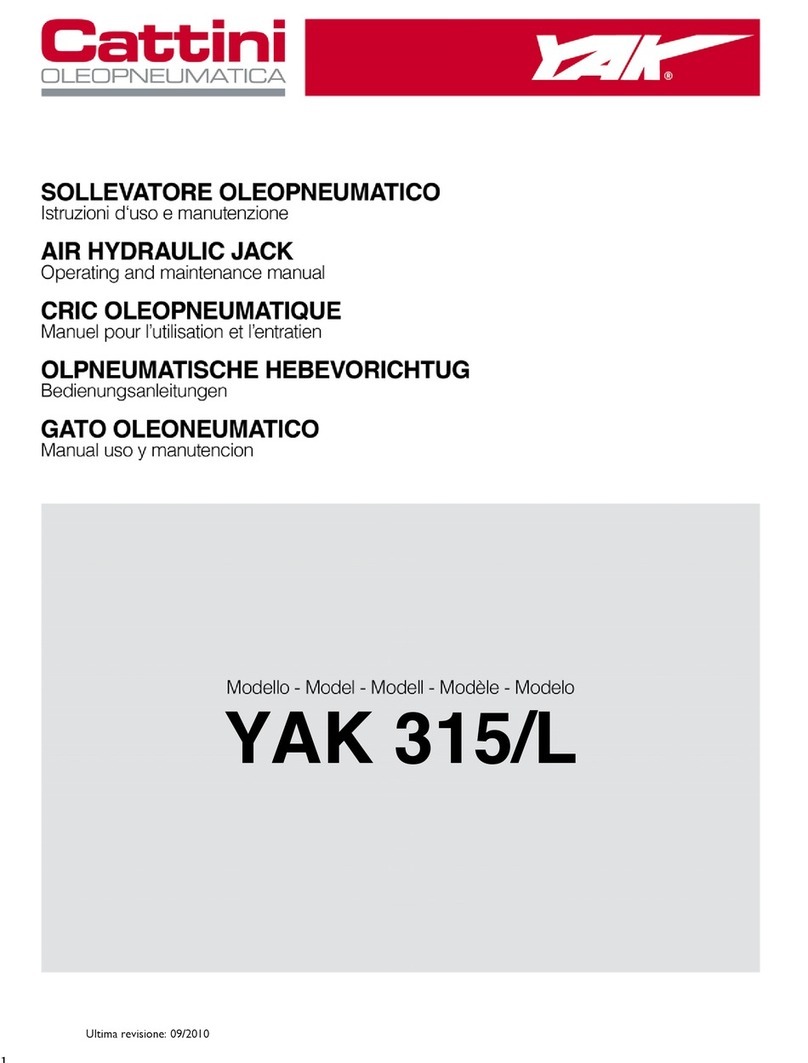
Cattini
Cattini YAK 315/L Operating and maintenance manual

Westward
Westward 3W929C Operating instructions and parts manual
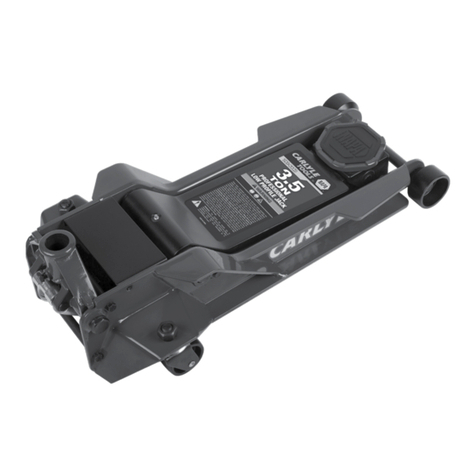
Carlyle Tools
Carlyle Tools Napa 791-6440 manual
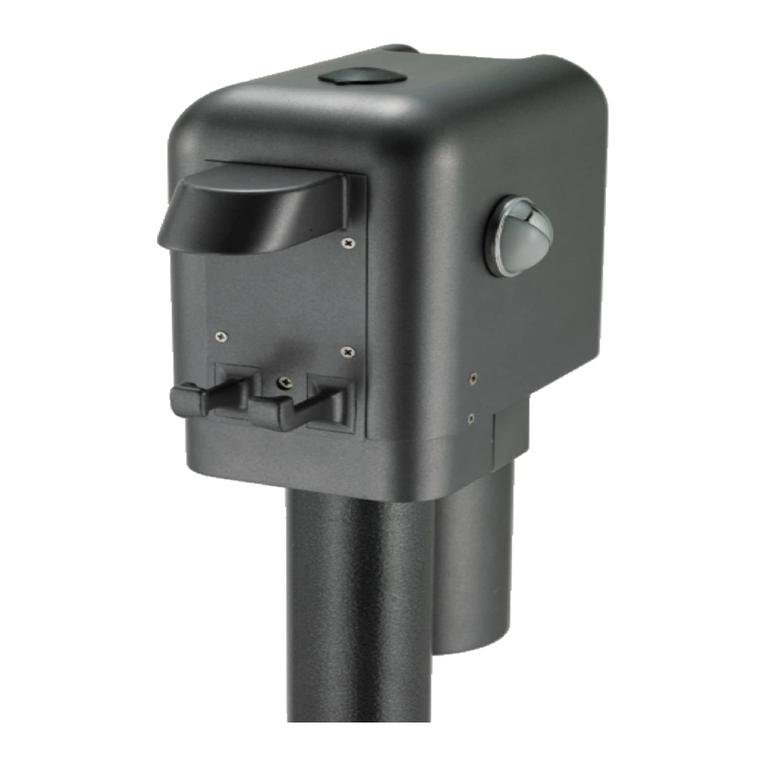
Husky
Husky 87247 instructions
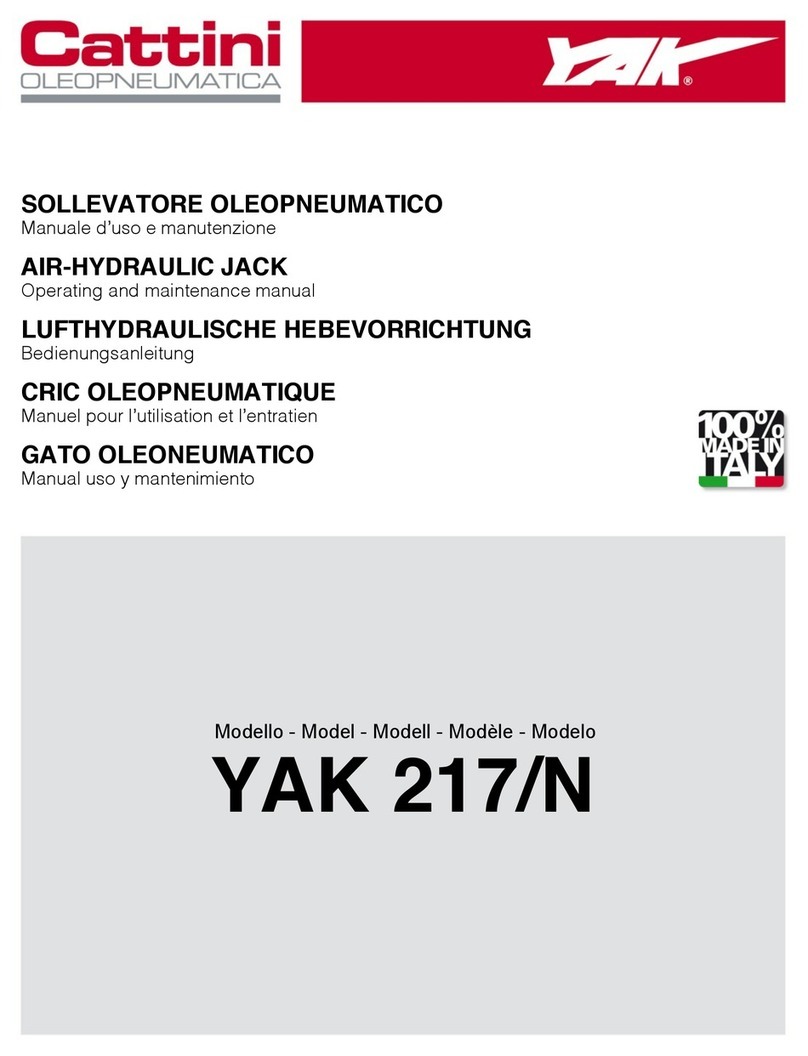
Cattini Oleopneumatica
Cattini Oleopneumatica YAK 217/N Operating and maintenance manual
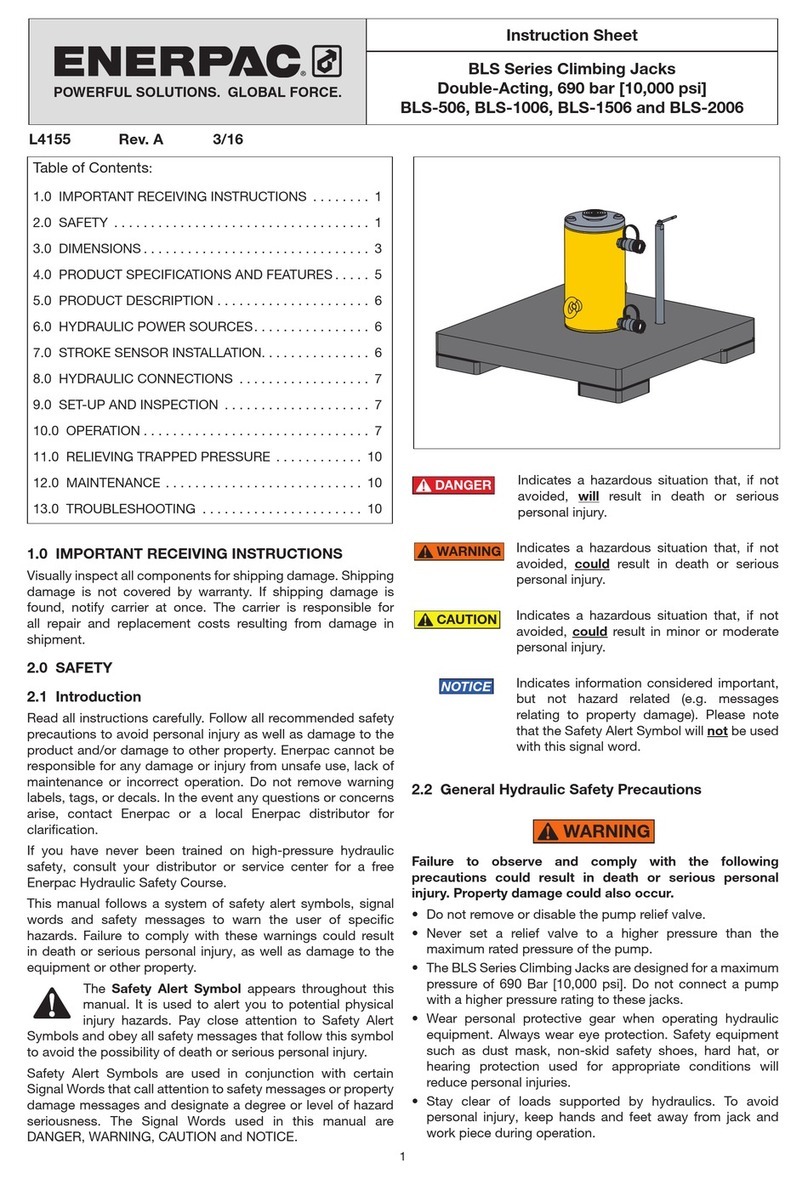
Enerpac
Enerpac BLS Series instruction sheet
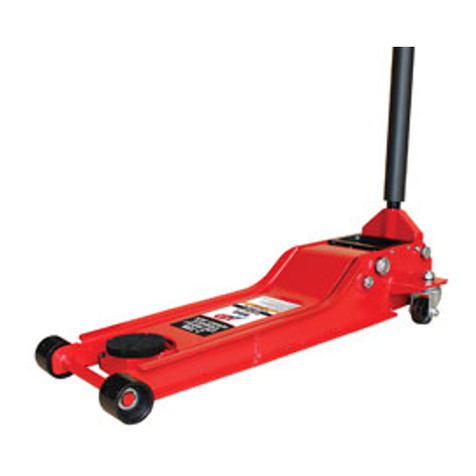
ATD Tools
ATD Tools ATD-7317 Operating instructions and parts manual

Laser
Laser 6734 quick start guide
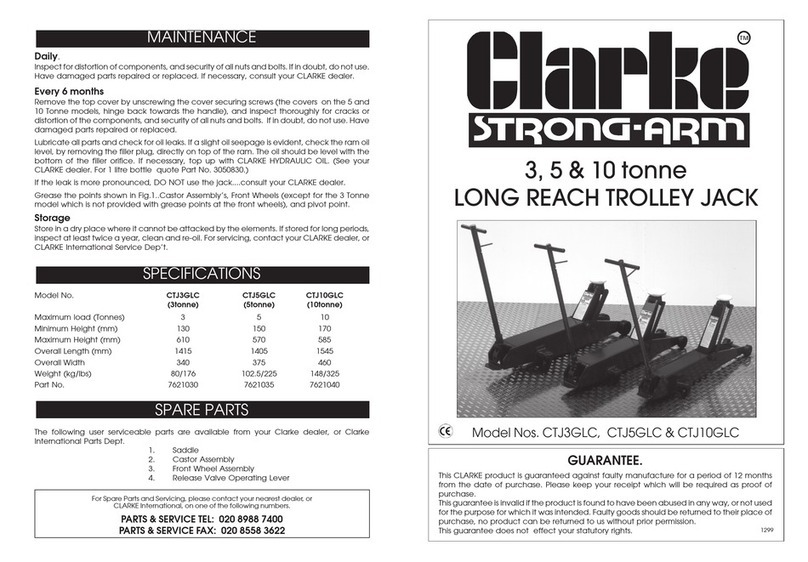
Clarke
Clarke STRONG-ARM CTJ3GLC quick start guide
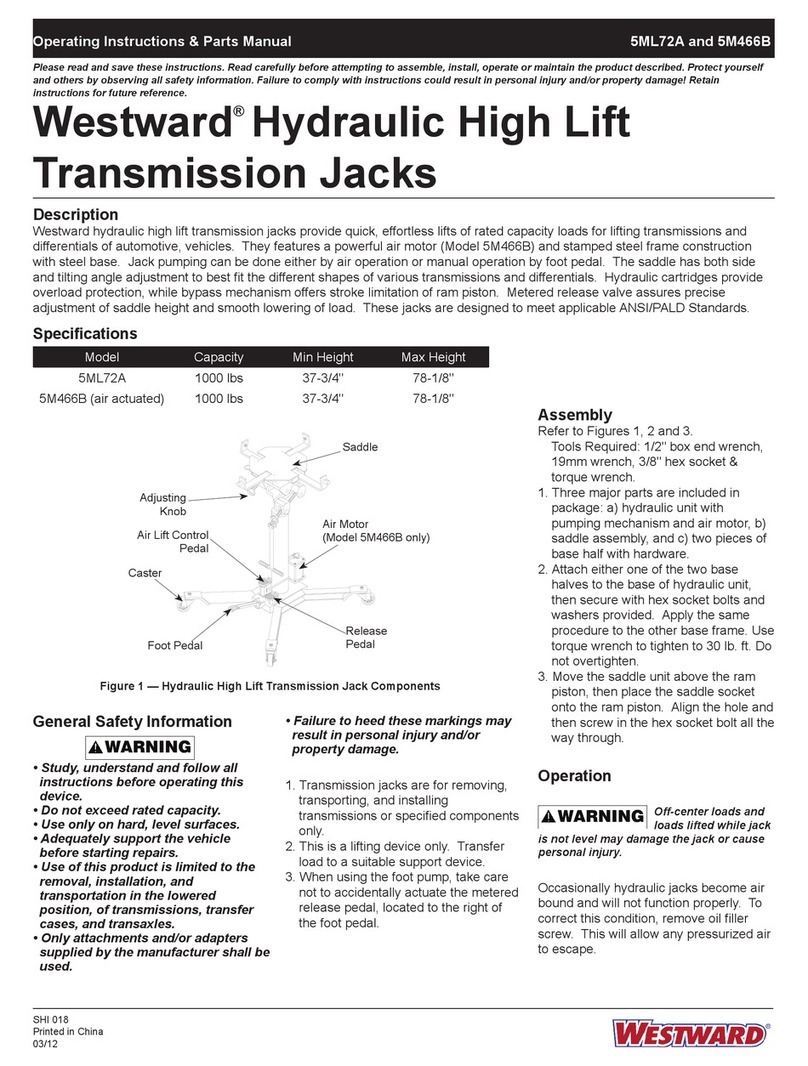
Westward
Westward 5ML72A Operating instructions & parts manual

Torin
Torin BigRed T83502A Operating lnstructions and Parts List
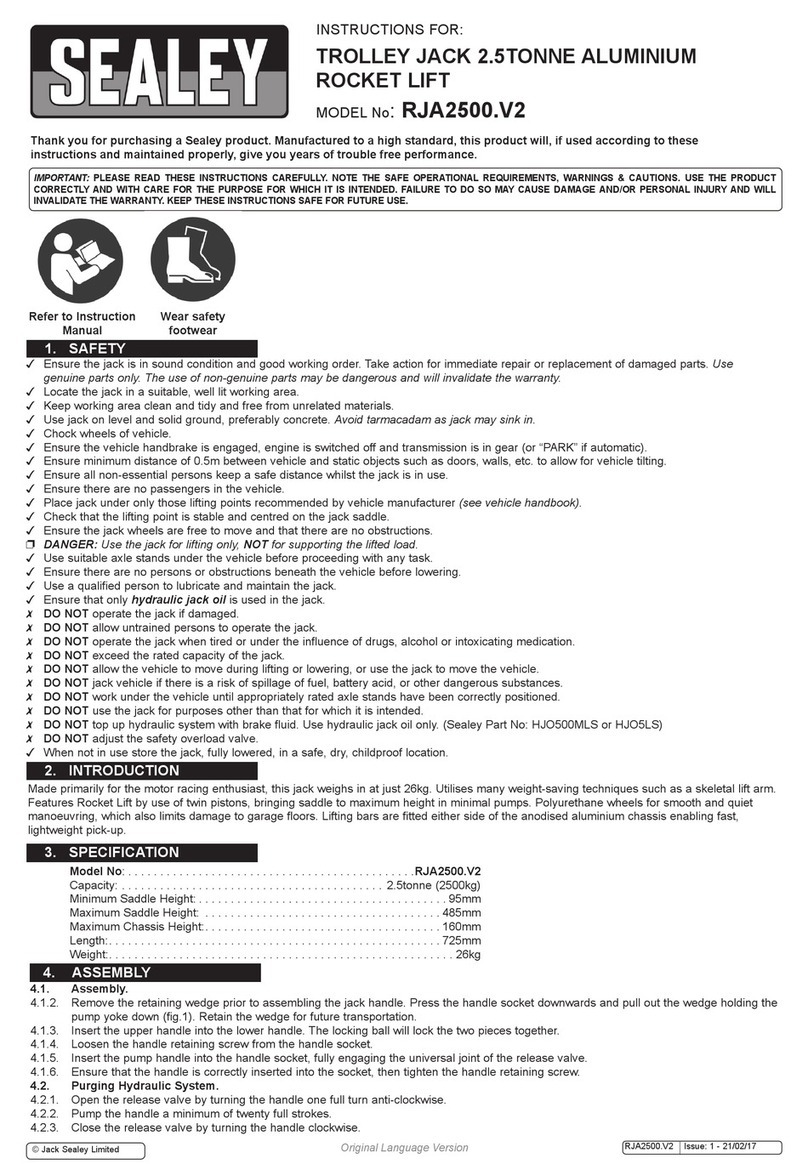
Sealey
Sealey RJA2500.V2 instructions
